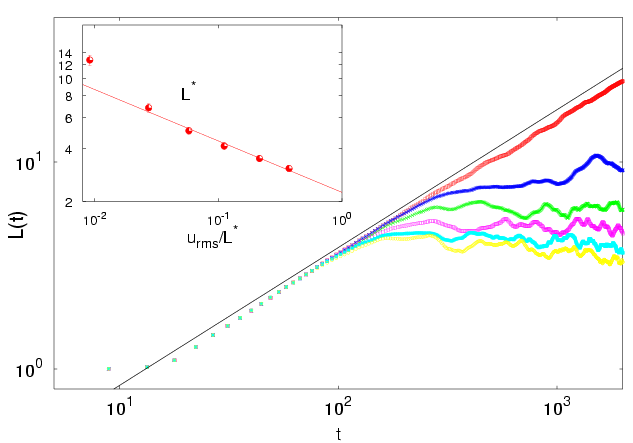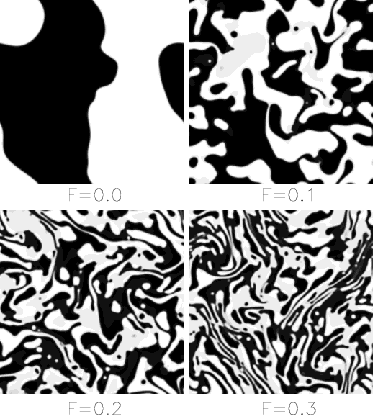Transport in binary mixtures
When a binary fluid mixture at the critical concentration is cooled from a high temperature to a sufficiently low temperature (below a critical one), the original homogeneous phase becomes unstable and spontaneously evolves into two phases separated by an interface. As time advances, an out-of-equilibrium process of phase ordering takes place through the formation of domains of a single phase that grows algebraically in time as L(t)~t1/3. In fluids, the presence of a hydrodynamic velocity field makes this process more complicated than the corresponding one in solid alloys. For instance, it is well known that hydrodynamics may accelerate the domain growth to L(t)~t2/3 (see Fig-left, red line). Phase ordering dynamics becomes even more complex and less understood when the fluid mixture is externally driven; beyond their theoretical interest, phase separating binary fluids under flow embody a great technological interest for their distinctive rheological properties.

Time growth of the typical domain size for the unstirred system (red line) and at increasing the stirring intensity (various colors). The inset display the behavior of the equilibrium length as a function of the normalized stirring intensity.

Typical domain in the statistical steady state induced by stirring.
This problem has been extensively investigated in shear flows, where coarsening becomes highly anisotropic: the single-phase domain growth accelerates in the shear direction, while in the transversal one the growth is arrested or strongly slowed down. Less clear is the case in which the mixture is stirred by a turbulent flow, which may completely suppress the phase separation process or generate a dynamical steady state with domains of finite length and well-defined phases.
References
[1] Turbulence and coarsening in active and passive binary mixtures
S. Berti, G. Boffetta, M. Cencini and A. Vulpiani Phys. Rev. Lett. 95 , 224501 (2005)
[2] Hydrodynamics and growth laws in lamellar ordering
M. Cencini, D. Diacono and G. Gonnella Europhys. Lett. 79, 26004 (2007)


